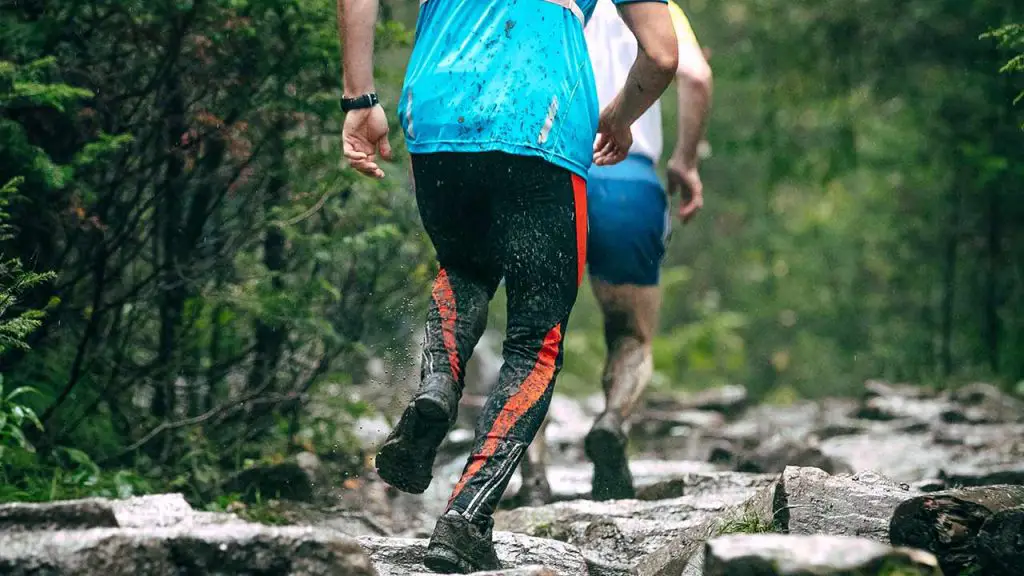Estimated read time: 4 minutes.
When it comes to running, there are a lot of factors that go into choosing the right gear. One of the most important decisions is what kind of fabric to wear. Many people assume cotton is the best option, but this isn’t true. This blog post will discuss the benefits of using synthetic materials, wool, and bamboo for running and why cotton isn’t always the best choice.
The Benefits of Synthetic Fabrics for Running
There are a few reasons why synthetic fabrics are often better for running than cotton. One of the most important factors is that synthetic materials are typically much lighter than cotton. This is important because it can help you stay comfortable during your run.
Another reason why synthetic fabrics are often better for running is that they tend to be more breathable than cotton. This means they will allow your skin to breathe and won’t hold onto sweat much. This is especially important in hot weather conditions.
One of the reasons people still choose to wear cotton for running is because it is a natural fabric. Synthetic fabrics are often made from petroleum products, which some people prefer to avoid. Cotton is also usually less expensive than synthetic fabrics.
How to Choose the Right Fabric for Running
The best fabric for running depends on a few factors, including your personal preferences and the climate you’ll be running in. Synthetic fabrics, wool, and bamboo are usually the best choice if you’re looking for a lightweight and breathable fabric. Here are the different types of fabrics:
Nylon
The benefits of nylon in running clothes are numerous. Nylon is a lightweight, breathable fabric that helps to regulate body temperature, keeping runners comfortable during their workout. It is also quick-drying, which helps to prevent chafing and keep runners feeling fresh. In addition, nylon is highly durable, meaning it can withstand repeated washings and wearings without showing signs of wear. As a result, nylon is an ideal choice for athletes looking for clothing that will perform well and last long.
Polyester
Polyester is lightweight and breathable, making it ideal for warm weather or strenuous activity. It wicks moisture away from the body, keeping athletes cool and dry. And it’s quick-drying so that sweat won’t cause any discomfort during a run. In addition, polyester is odor-resistant, and stains are easily removed. Polyester is also a durable fabric that will stand up to repeated washings. For all these reasons, polyester has become the fabric of choice for many runners.
Spandex
Spandex is a stretchy, synthetic fabric with various applications, including running clothes. It was first introduced in the 1960s and quickly gained popularity due to its ability to stretch and recover. Spandex is commonly used in running clothes because it provides a snug, comfortable fit that doesn’t restrict movement. It also wicks away sweat and helps to regulate body temperature, making it an ideal fabric for runners who want to perform their best. In addition, spandex is lightweight and durable, meaning that it won’t weigh you down or fall apart after repeated washings.
Polypropylene
This fabric is water-resistant and often used in sportswear for its moisture-wicking properties. It is also lightweight and quick-drying. This fabric is great as a running base layer because it helps to keep you dry and comfortable.
Wool
Merino wool is a type of natural fiber that is often used in outdoor clothing. It has several advantages over synthetic fibers, including being more breathable and tolerant to moisture. As a result, it is an excellent choice for running clothes. In addition to being comfortable in warm weather, merino wool is also effective in regulating body temperature in cold weather. It helps to keep runners warm without causing them to overheat, making it an ideal fabric for all seasons. Thanks to its many benefits, merino wool has become a popular choice for running clothes in recent years.
Bamboo
Bamboo in running clothes is a comfortable and environmentally-friendly choice for active wear. Bamboo is a sustainable resource that grows quickly, making it a more eco-friendly option than traditional fabrics such as cotton. In addition, bamboo is naturally antimicrobial and moisture-wicking, which helps to keep runners dry and comfortable. The material is also incredibly soft and lightweight, making it ideal for active wear. While bamboo running clothes may cost a bit more than traditional options, the comfort and environmental benefits make it a worth investment.
Cotton
Cotton is a natural fiber that has been used for centuries. However, cotton has several disadvantages that make it less than ideal for running clothes:
- Cotton is a heavy fabric that can weigh runners down and cause discomfort.
- It doesn’t absorb sweat well, leading to chafing.
- Cotton is less durable than synthetic fabrics, meaning it won’t stand up to repeated washings.
The Importance of Proper Gear When Running
It’s important to choose the best gear when running because it can help to improve your performance. The right fabric can make a big difference, so it’s essential to know the pros and cons of each type before making a purchase. Choose a lightweight, breathable, and quick-drying material to stay comfortable during your run. And don’t forget to consider the climate you’ll be running in – wool is an excellent choice for cold weather, while bamboo is ideal for hot weather. With the suitable fabric, you’ll be able to perform your best and enjoy your run.
Conclusion
Various fabrics can be used for running clothes, but synthetic fabrics are often the best choice in combination with wool and bamboo. They are lightweight and breathable, which helps to keep runners comfortable. In addition, synthetic fabrics are durable and quick-drying, making them ideal for repeated washings. And finally, they are available in various colors and styles to suit every runner’s taste. So next time you’re shopping for running clothes, consider synthetic, wool, and bamboo fabrics’ benefits. And remember to stay away from cotton – it’s not as effective in wicking away sweat and can cause chafing.
- How Many Laps Around a Track is a 5K: Your Guide - October 22, 2023
- When is Track and Field Season? - October 22, 2023
- Understanding the Length: How Long Is a Running Track? - October 22, 2023




